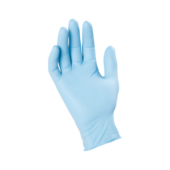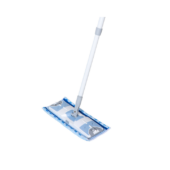Introduction:
Food safety protects public health and food businesses’ reputations and operations. With millions worldwide contracting foodborne diseases, food makers and suppliers must follow rigorous food safety rules. Best practices help organisations satisfy regulatory requirements and safeguard their consumers and brand. This article discusses seven recommended practices for food safety compliance and high-quality food production.
Food Safety Compliance
There is no one definition of food safety compliance because requirements vary by area and product type. Food safety compliance should include food supply contamination prevention measures. It’s a system that identifies and controls food safety hazards throughout the food supply chain and facility procedures.
Internal food safety programs are usually monitored by regulatory agencies like the FDA and USDA in the US. Thus, food safety compliance means meeting regulations for facilities that provide food and drinks to the public.
Hazard identification is often done using HACCP. Global food safety standards and regulations are based on HACCP. Seven fundamental HACCP concepts are:
1. Analyse hazards
2. Identify critical control points (CCPs) 3. Establish critical limitations
4. Choose monitoring methods
5. Create remedies
6. Develop verification methods
7. Maintain records and documents.
Steps to Improve Food Safety and Brand Protection
Food safety programs need good plans to succeed. Without adequate compliance and inspection, food items may put customers at danger, whether you use HACCP or a customised food safety strategy. To most crucially safeguard customers and your business, follow these food safety compliance requirements.
1. Know Food Safety Standards
Understanding your area, state, or country’s regulating organisations is crucial to food safety compliance.
As indicated above, HACCP underpins several global food safety regulations. These standards range from general guidelines to precise requirements. The following is an overview of some of the most common standards, however regional requirements may differ.
Do you know which standards apply to your manufacturing lines and how your product inspection equipment provider can help you achieve them? Global commercial trainers and auditors guarantee you fulfil requirements efficiently.
2. Ensure package quality
The FDA declared in 2018 that it will enforce Food Safety Modernisation Act Foreign Supplier Verification Program (FSVP) criteria for food contact substance importers. Their concentration is on food safety issues that cause costly recalls, such as:
- Poisonous materials
- Food additives with unknown ingredients
- Materials with decomposing substances
- Materials tainted during production
- A container of dangerous materials
To succeed, food safety and packaging quality initiatives need dedication and resources. Consider these package quality control factors:
- Airflow in packaging manufacturing and storage areas
- Air quality to assess contaminants in and around your site
- Clean and maintain manufacturing equipment warehouse floors, walls, and ceilings.
- Pre-, mid-, and post-production process sampling Health and sanitation concerns
All packaging must prevent pollutants from affecting product quality and safety.
3. Promote Compliance Tracking
Food traceability tracks food products and ingredients along the supply chain. This process records and links food product and ingredient manufacturing, processing, and distribution. Product tracing enables government authorities, manufacturers, and merchants swiftly locate the product’s source and contamination site during a foodborne disease epidemic. Efficient tracking speeds product removal, decreasing foodborne infections.
4. Consider Visual Inspection
Visual inspection is a typical food safety verification approach. It’s cheap and any skilled worker can do it. Visual examination has drawbacks.
5. Keep Food Scales Clean
Poor equipment maintenance, cleaning, and operation have caused several severe food poisoning incidents. Processing equipment should be developed, installed, and maintained hygienically to assure food safety. Equipment must be cleanable and sanitised, and surface materials must withstand damage from food and cleaning agents.
Many materials may be used to build culinary equipment, including scales. Application-specific metals and non-metals like plastics and rubber are utilised. A thorough maintenance routine should involve periodic wear and degradation inspection and equipment cleaning, regardless of material.
Hygienic food scales and processing equipment should withstand high temperatures, high-pressure sprays, and antimicrobial detergents during cleaning and disinfection.
6. Have Proper Weight
TelTek C80-1 weigherFood processors realise how important checkweighers are for quality control. Checkweighers weigh every package to ensure product weights match label weights.
Consistent quality products boost brand image and financial stability. Does your firm verify that supplied products weigh the labelled amount?
7. Add FBDs
Failing to implement quality control measures or using human inspection may lead to missing foreign items in production. This can cause costly product recalls, customer health risks, and catastrophic brand and manufacturing equipment damage.
Inspection systems must detect foreign items at many food supply chain touchpoints. Metal detection or X-ray inspection can be used in a food safety compliance strategy to detect foreign objects on the manufacturing line. Food qualities, probable pollutants, minimal foreign object size, and detection likelihood will decide the best technique for an application.
Metal detection is a popular method for ferrous, non-ferrous, and stainless-steel foreign item identification. X-ray inspection devices may also detect glass, stone, and certain polymers.
Advantages of Metal Detection
Meat-focused Metal Shark BD-E2.Metal detecting technology improves food metal testing. Software now automates detection parameter setup, saving time. Metal detection benefits from other considerations, including:
- Quality assurance tests and visual inspections won’t pick up trash, thus a metal detector is needed to ensure items are metal-free.
- Related to this, significant micro metal contamination in food preparation indicates equipment issues. This can discover device maintenance needs before production and avoid breakdowns.
- Metal detecting technology is low-maintenance and reduces manual quality inspections.
Conclusion
Food safety compliance needs precision, the correct tools, and a deep grasp of industry rules. Businesses may safeguard consumers and themselves by adopting these best practices, from food safety regulations to equipment hygiene. Food safety is not just a regulatory requirement but also essential to creating customer confidence and a successful brand.

















